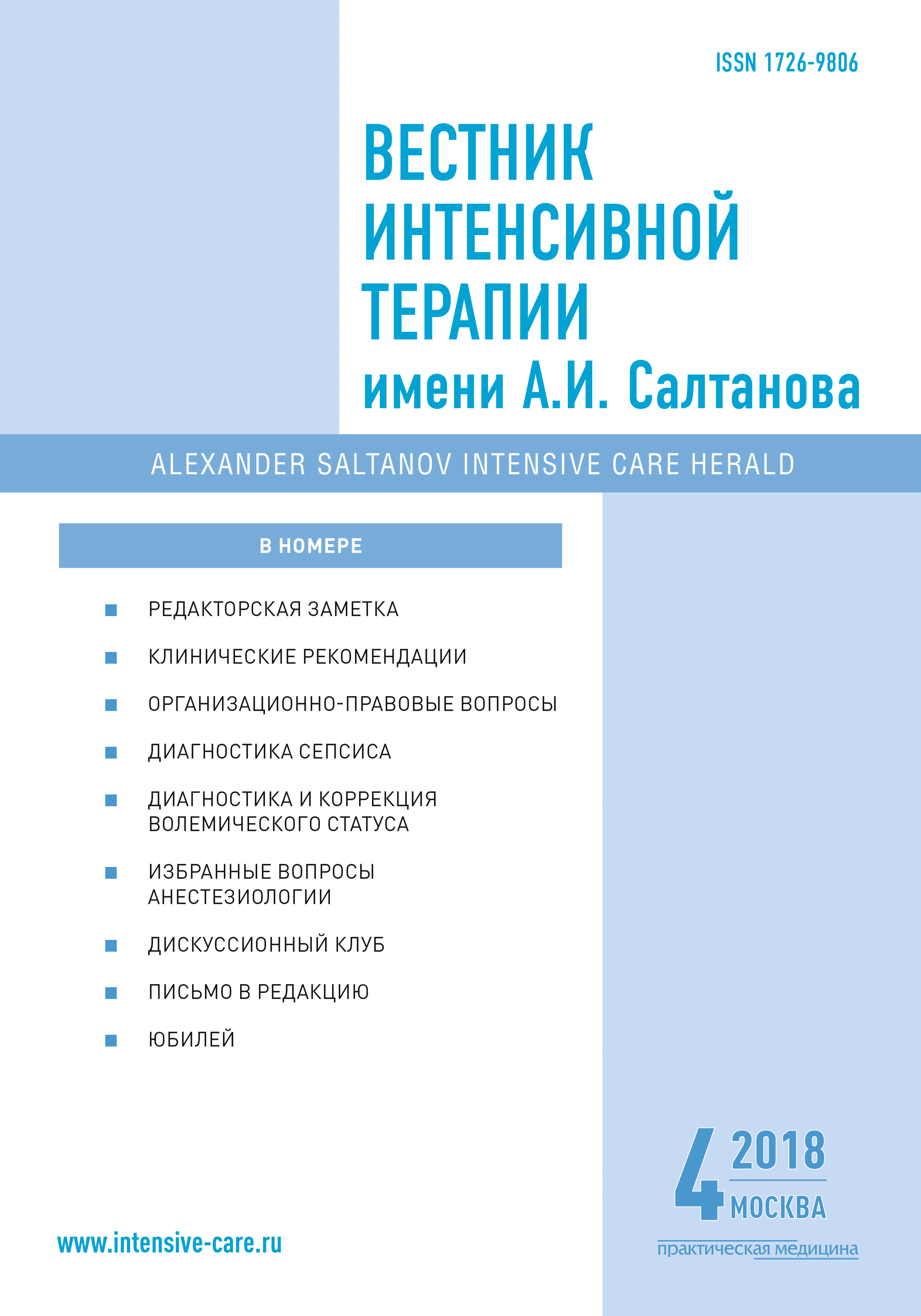Abstract
One of the key issues in the fight against sepsis is the early detection of its predictors. The aim of the work is to identify predictors the development of neonatal sepsis.
Methods. Design-retrospective, observational, single-center. The development included 163 newborns with sepsis, 34 died. The Kulbak measure was used to assess the informativeness of the studied clinical and laboratory variables. The function of response was taken as the outcome of the disease: survived or died.
Results. The analysis of the informative value of clinical and laboratory parameters in newborns on the risk of development of lethal outcome.
Conclusion. The predictors of early neonatal sepsis include indicators of the number of blood platelets, total blood protein, body weight and the number of blood neutrophils. Their critical threshold values are also calculated.
References
- Goldstein B., Giroir B., Randolph A., et al. International pediatric sepsis consensus conference: Definitions for sepsis and organ dysfunction in pediatrics. Pediatr. Crit. Care Med. 2005; 6(1): 2–8. DOI: 10.1097/01.PCC.0000149131.72248.E6.
- Scott H.F., Deakyne S.J., Woods J.M., Bajaj L. The prevalence and diagnostic utility of systemic inflammatory response syndrome vital signs in a pediatric emergency department. Acad. Emerg. Med. 2015; 22: 381–389. DOI: 10.1111/acem.12610.
- Singer M., Deutschman C.S., Seymour C.W., et al. The Third International Consensus Definitions for Sepsis and Septic Shock (Sepsis-3). JAMA. 2016; 315(8): 801–810. DOI: 10.1001/jama.2016.0287.
- Schlapbach L.J., Straney L., Bellomo R., MacLaren G., Pilcher D. Prognostic accuracy of age-adapted SOFA, SIRS, PELOD-2, and qSOFA for in-hospital mortality among children with suspected infection admitted to the intensive care unit. Intensive Care Med. 2018; 44(2): 179–188. DOI: 10.1007/s00134-017-5021-8.
- Cheryl P., Srinivas M., Rollin B., et al. Mortality Risk Using a Pediatric Quick Sequential (Sepsis-Related) Organ Failure Assessment Varies With Vital Sign Thresholds. Pediatric Critical Care Medicine. 2018; 19(8): e394–e402. DOI: 10.1097/PCC.0000000000001598.
- ИвановД.О., Шабалов Н.П., Петренко Ю.В. Неонатальный сепсис. Опыт построения гипотезы. Детская медицина Северо-Запада. 2012; 3: 37–45. [Ivanov D.O., Shabalov N.P., Petrenko Ju.V. Neonatalʼnyj sepsis. Opyt postroenija gipotezy. Detskaja medicina Severo-Zapada. 2012; 3: 37–45. (In Russ)]
- ГолубцоваЮ.М., Дегтярев Д.Н. Современные подходы к профилактике, диагностике и лечению раннего неонатального сепсиса. Неонатология. 2014; 2: 15–26. [Golubcova Ju.M., Degtjarev D.N. Sovremennye podhody k prfilaktike, diagnostike i lecheniju rannego neonatalʼnogo sepsisa. Neonatologija. 2014; 2: 15–26. (In Russ)]
- КульбакС. Теория информативности и статистика. М.: Наука, 1967. [Kulʼbak S. Teorija informativnosti i statistika. M.: Nauka, 1967. (In Russ)]
- Weiss S.L., Deutschman C.S. Are septic children really just “septic little adults”? Intensive Care Med. 2018; 44: 392–394. DOI:10.1007/s00134-017-5007-6.

This work is licensed under a Creative Commons Attribution-NonCommercial-ShareAlike 4.0 International License.
Copyright (c) 2018 ANNALS OF CRITICAL CARE

